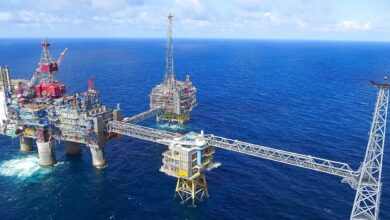Shell: Appraisal sets stage for overall development cycle for emerging deepwater projects

By Joanne Liou, associate editor
Post-discovery, the appraisal phase is key in setting a solid foundation for the selection, design, execution and production phases of the development. “The appraisal period has strong influence on the overall development cycle,” David Reid, Deepwater Appraisal Manager at Shell Upstream Americas, said. He noted that upfront preplanning will lead to uninterrupted operations throughout the appraisal period. “When you get into those appraisal activities, when you have surprises, you have contingency planning developed and can continue to work,” he said on 5 May at OTC in Houston.
The level of preplanning, contingent planning using sidetracks, change of ownership and non-technical aspects, such as capital constraints or timing pressures, account for the variability in appraisal times from project to project. As industry forges into new plays in deeper waters, “the challenge in designing and executing an appraisal program really ramps up,” Mr Reid stated. Even before exploration success, it is critical to start planning the appraisal strategy, he said. Appraisal is all about determining the technological and economical feasibility of the discovery, and activities completed in the appraisal phase – drilling, sidetracks, seismic, well testing – set the stage for future decisions, Mr Reid explained.
One of the main pillars that supports a well-designed appraisal program is subsurface understanding, he said, because it helps to support estimates for in-place and recoverable volumes. In the deepwater environment, where the stakes and costs are high, “you have to structure your thinking about the uncertainty and how you place your wells,” Mr Reid said. “In a known, calibrated basin, it can be easy. In a frontier basin, where you don’t have a lot of data, that can be a lot more difficult.”
He added that the geological context of an appraisal strategy should be addressed on three scales: regional, field and reservoir. For example, in the pre-salt carbonate reservoir in Brazil, “understanding field connectivity is something you really need to address on the regional scale. Understanding mobility and residual oil, you need to understand at the reservoir scale. Those aspects of pre-salt are critical to understand uncertainties, understand the range of impacts.”
Timing considerations – internal and external – also play a significant role in shaping appraisal planning and outcomes. “You have license expiry issues. You have commitment to governments. You have internal schedule pressures and capital constraints,” Mr Reid said. “All these factors need to be factored in the appraisal.” Staying the course and making changes along the way are inevitable, but the key is to “know when you want to continue. Know when you want to stop.”
For more information, please see SPE 25094, “Key Aspects of Deepwater Appraisal.”




